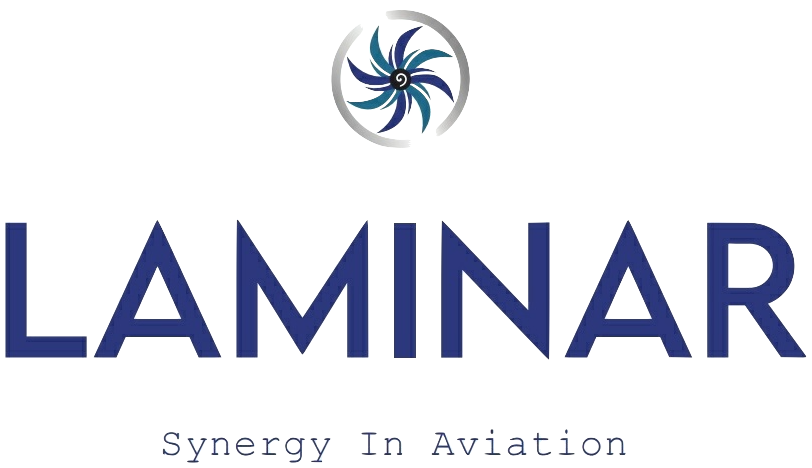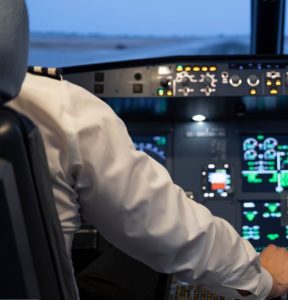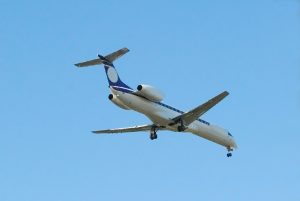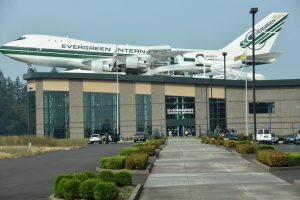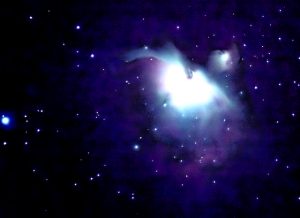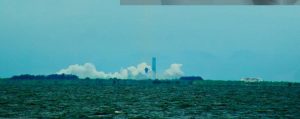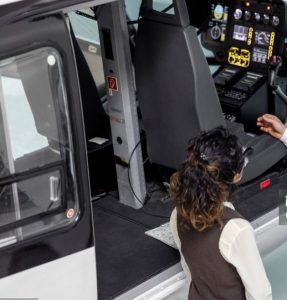Jet Aircraft Systems Learnt In Jet Orientation Course
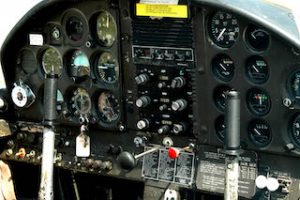 Jet Orientation Courses (JOC) are essential for pilots transitioning from propeller-driven aircraft to jet-powered planes. One of the core components of these courses is a comprehensive understanding of the various systems that constitute a jet aircraft. These systems are more complex than those in smaller aircraft and require in-depth knowledge and proficiency for safe and efficient operation. This article delves into the critical systems covered in Jet Orientation Courses, explaining their functions, importance, and the training pilots receive to master them.
Jet Orientation Courses (JOC) are essential for pilots transitioning from propeller-driven aircraft to jet-powered planes. One of the core components of these courses is a comprehensive understanding of the various systems that constitute a jet aircraft. These systems are more complex than those in smaller aircraft and require in-depth knowledge and proficiency for safe and efficient operation. This article delves into the critical systems covered in Jet Orientation Courses, explaining their functions, importance, and the training pilots receive to master them.
Jet aircraft systems
Jet aircraft systems are intricate and interdependent, ensuring the aircraft’s performance, safety, and comfort. The primary systems taught in Jet Orientation course include the following:
- Powerplant (Engines)
- Electrical systems
- Hydraulic systems
- Pneumatic systems
- Avionics
- Flight control systems
- Fuel systems
- Environmental control systems
- Landing gear systems
- Ice and rain protection systems
1) Powerplant (Engines)
Jet engines are the heart of a jet aircraft, providing the necessary thrust to propel the aircraft through the air. They differ significantly from piston engines used in smaller aircraft, and understanding their operation is crucial for pilots.
Types of jet engines
-
-
- Turbojet engines: These engines generate thrust by expelling exhaust gases at high speeds. They are known for their high-speed capabilities but are less efficient at lower speeds.
- Turbofan engines: These are the most common engines in commercial aviation, combining the high-speed benefits of turbojets with better fuel efficiency and reduced noise. They have a large fan at the front that provides additional thrust by bypassing air around the engine core.
-
Key components
-
-
- Compressor: Increases the pressure of incoming air.
- Combustion chamber: Mixes fuel with compressed air and ignites it.
- Turbine: Extracts energy from the exhaust gases to drive the compressor and fan.
- Exhaust: Expels exhaust gases to generate thrust.
-
Training focus
Pilots learn about engine startup and shutdown procedures, thrust management, emergency handling of engine failures, and interpreting engine performance data.
2) Electrical systems
The electrical system powers various critical components of the aircraft, including avionics, lighting, and environmental controls.
Components
-
-
- Generators/alternators: Provide electrical power during flight.
- Batteries: Supply power for engine starts and as a backup.
- Bus bars: Distribute electrical power to different systems.
- Circuit breakers and fuses: Protect electrical circuits from overloads.
-
Training focus
Pilots are trained to manage the electrical system, including normal operations, troubleshooting, and handling electrical failures.
3) Hydraulic systems
Hydraulic systems in jet aircraft operate essential functions such as flight controls, landing gear, brakes, and flaps.
Components
-
-
- Hydraulic pumps: Provide the pressure needed to operate hydraulic systems.
- Reservoirs: Store hydraulic fluid.
- Actuators: Convert hydraulic pressure into mechanical movement.
- Valves: Control the flow of hydraulic fluid.
-
Training focus
Pilots learn about hydraulic system operation, emergency procedures for hydraulic failures, and routine maintenance checks.
4) Pneumatic Systems
Pneumatic systems utilise compressed air for various functions, including engine starts, pressurisation, and de-icing.
Components
-
-
- Bleed air valves: Control the flow of compressed air from the engines.
- Air conditioning packs: Use bleed air for cabin temperature control.
- Pressure regulators: Maintain appropriate air pressure in the system.
-
Training focus
Pilots are trained on the use of pneumatic systems, managing air conditioning and pressurisation, and handling pneumatic system malfunctions.
5) Avionics
Avionics encompass all the electronic systems used for communication, navigation, and monitoring.
Key systems
-
-
- Communication systems: Include VHF and HF radios for air-to-ground and air-to-air communication.
- Navigation systems: Include GPS, VOR, ILS, and other navigation aids.
- Flight management system (FMS): Automates flight planning and navigation.
- Autopilot systems: Assist in controlling the aircraft without direct pilot input.
-
Training focus
Pilots receive extensive training on the operation of avionics, programming the FMS, using autopilot systems, and troubleshooting avionics issues.
6) Flight control systems
Flight control systems manage the aircraft’s attitude and flight path. They include both primary and secondary control surfaces.
Primary controls
-
-
- Ailerons: Control roll.
- Elevators: Control pitch.
- Rudder: Controls yaw.
-
Secondary controls
-
-
- Flaps: Increase lift during takeoff and landing.
- Spoilers: Reduce lift and increase drag.
- Trim systems: Adjust control surface positions to maintain steady flight.
-
Training focus
Pilots are trained to understand the mechanics and operation of flight controls, use of trim, and emergency procedures for control system failures.
7) Fuel systems
The fuel system stores and delivers fuel to the engines, ensuring continuous operation.
Components
-
-
- Fuel tanks: Store fuel.
- Fuel pumps: Deliver fuel from tanks to the engines.
- Fuel valves: Control fuel flow.
- Fuel quantity indicators: Monitor fuel levels.
-
Training focus
Pilots learn fuel management techniques, fuel balancing procedures, and how to handle fuel system malfunctions.
8) Environmental control systems
These systems manage cabin pressure, temperature, and humidity, ensuring passenger comfort and safety.
Components
-
-
- Pressurisation system: Maintains cabin pressure at comfortable levels.
- Air Conditioning system: Controls cabin temperature.
- Ventilation system: Ensures a supply of fresh air.
-
Training focus
Pilots are trained on managing cabin pressurisation, setting and monitoring cabin temperature, and handling environmental control system failures.
9) Landing gear systems
The landing gear system supports the aircraft during takeoff, landing, and taxiing.
Components
-
-
- Landing gear legs: Support the aircraft’s weight.
- Shock absorbers: Absorb the impact during landing.
- Brakes: Slow down the aircraft on the ground.
- Steering systems: Allow for directional control during taxiing.
-
Training focus
Pilots learn the operation of landing gear, brake management, emergency gear extension procedures, and handling landing gear failures.
10) Ice and rain protection systems
These systems prevent ice formation on critical surfaces and ensure clear visibility during rain.
Components
-
-
- De-icing systems: Remove ice from surfaces.
- Anti-icing systems: Prevent ice formation using heat or chemicals.
- Windshield wipers: Clear rain from the cockpit windshield.
-
Training focus
Pilots are trained to activate and manage ice and rain protection systems, understand the principles of icing, and handle icing-related emergencies.
Familiarisation of jet aircraft
The Jet Orientation course provides pilots with a thorough understanding of the complex systems of a jet aircraft. This knowledge is essential for the safe and efficient operation of these advanced machines. The course covers all critical systems, including engines, electrical and hydraulic systems, avionics, flight controls, fuel systems, environmental controls, landing gear, and ice and rain protection. By mastering these systems, pilots are well-prepared to transition to jet aircraft, ensuring they can handle the demands of modern aviation and maintain the highest standards of safety and proficiency. As the aviation industry continues to evolve, the importance of comprehensive training in jet aircraft systems will remain paramount, making the Jet Orientation course an indispensable part of a pilot’s education and career development.
